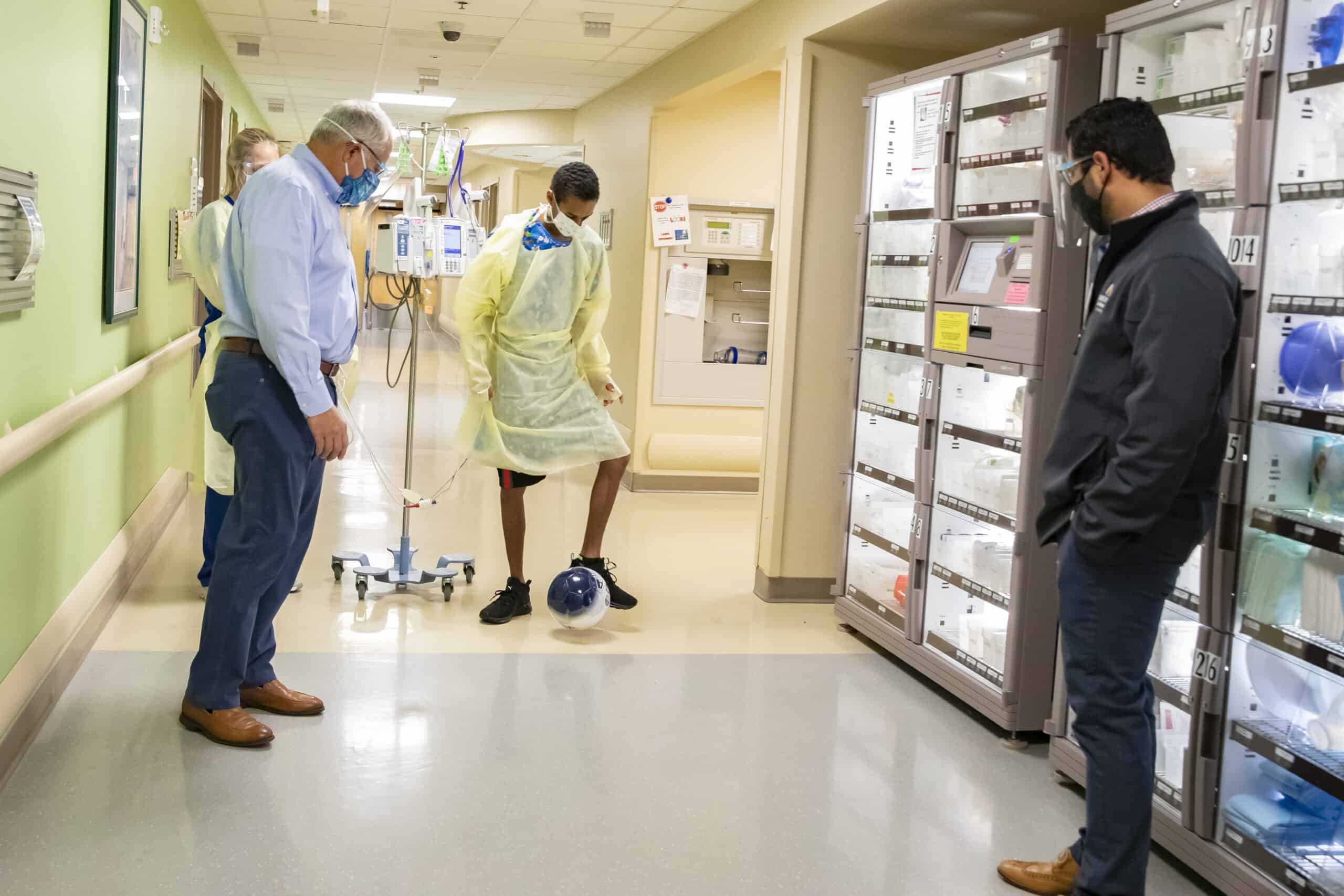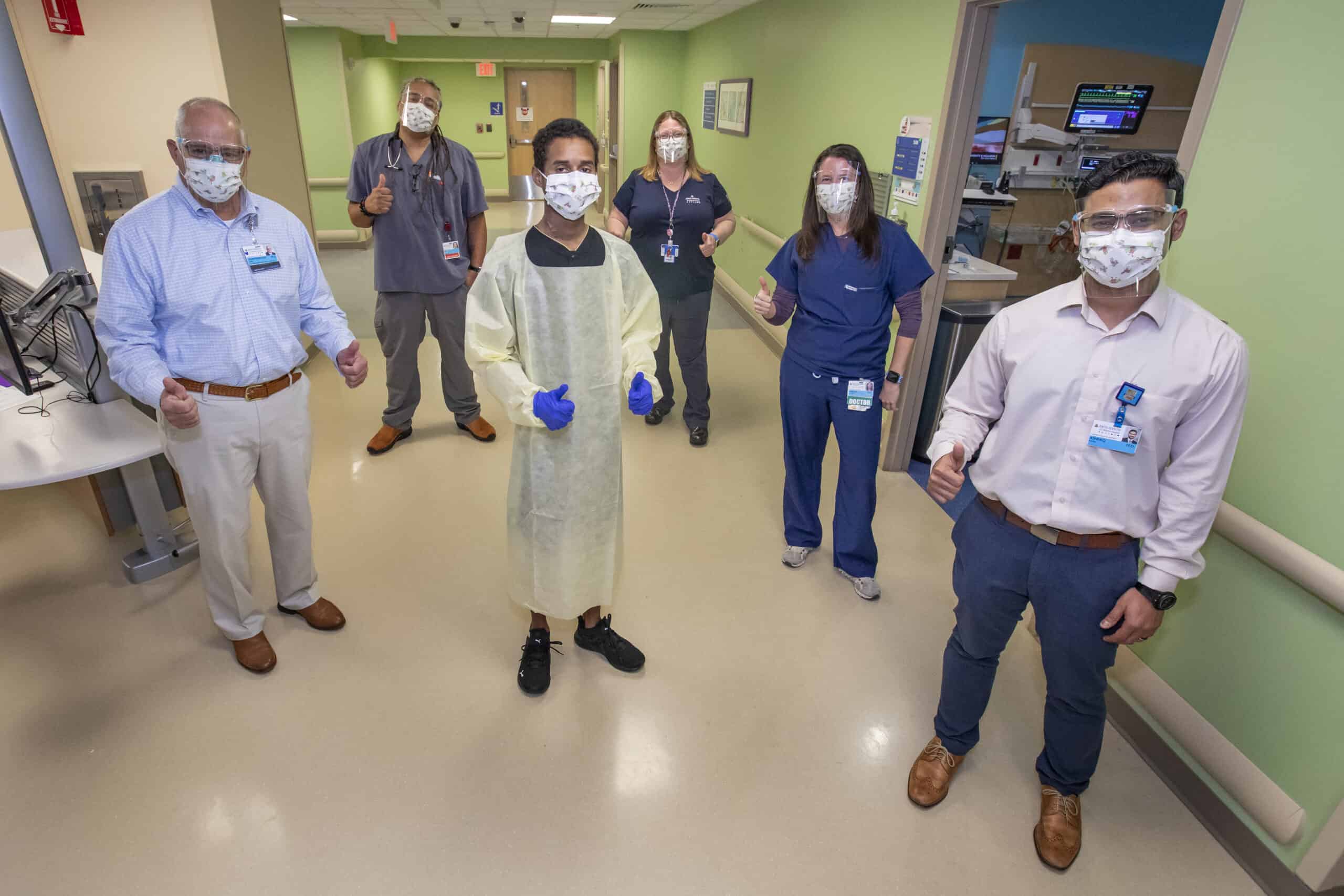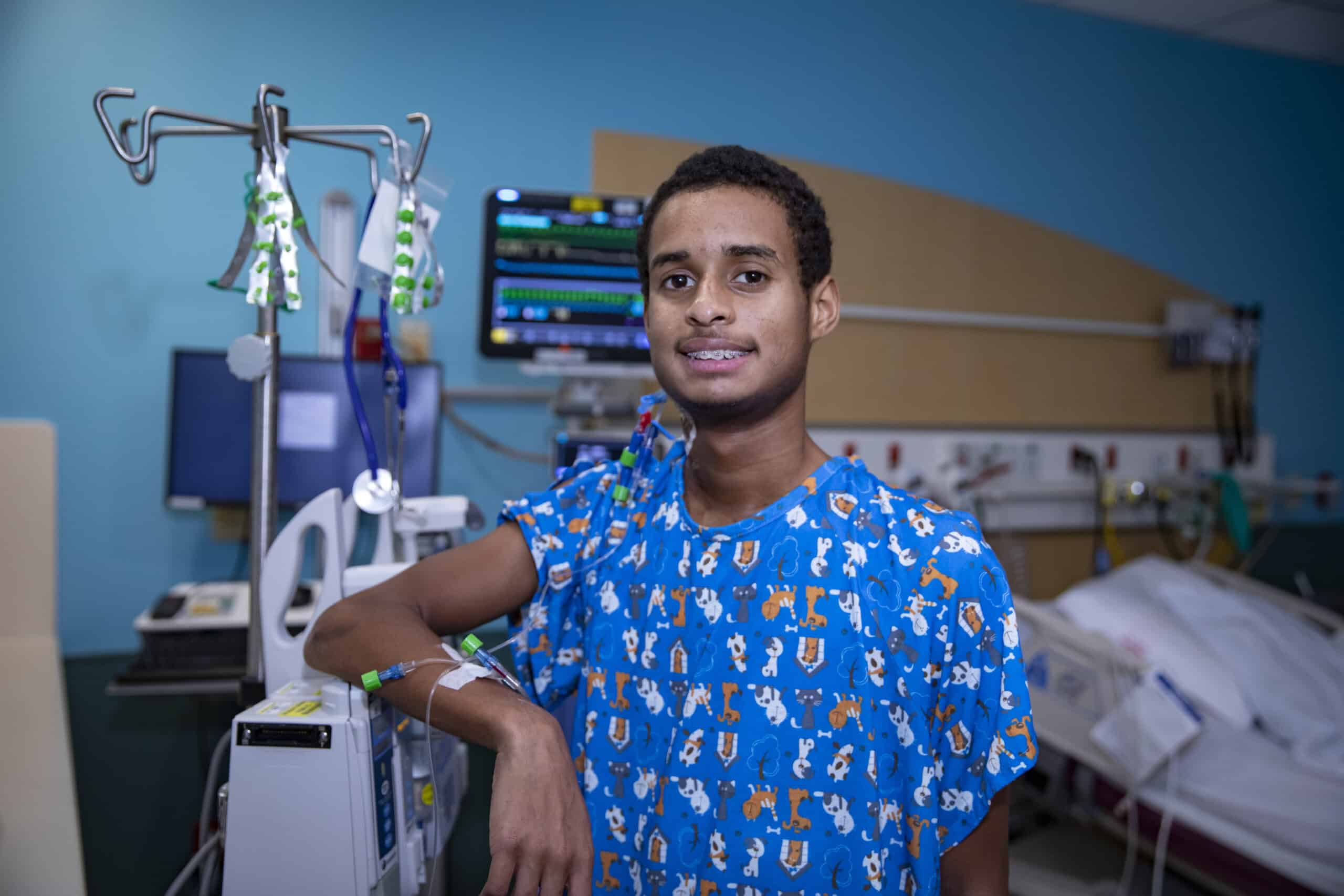One Year Later with a New Heart: Wilfre’s Back on the Soccer Field
Just a year ago, a promising young soccer star from Pinellas Park entered the emergency center at Johns Hopkins All Children’s Hospital. The seemingly healthy 15-year-old had taken a turn for the worse and suddenly needed the most aggressive form of life support, extracorporeal membrane oxygenation (ECMO).
His heart was failing him. Time was of the essence.

Looking for Things to Do in Tampa Bay?
>>This Week’s Favorite Events
>> Nearby U Pick Farms
>> 40+ Free Things to Do with Kids
“I couldn’t breathe well, I had been throwing up and had diarrhea,” recalls Wilfre. “I was really sick.”
Meagan King, R.N., and Daren D. Coleman, a pediatric paramedic, immediately noted an elevated and rapid heart rate with an abnormal rhythm, low temperature and rapid breathing.
That prompted Danielle Hirsch, M.D., an emergency medicine physician in the Johns Hopkins All Children’s Hospital Emergency Center on duty that day, to order a chest X-ray and an electrocardiogram (EKG).
“The results showed his heart was big and it was not functioning normally,” Hirsch says. “His vital signs were becoming more unstable.”
He went into cardiac arrest for two minutes. The EC team stabilized his heart rhythm, while the pediatric cardiology team and cardiovascular intensive care unit (CVICU) teams were on standby to work hand-in-hand in Wilfre’s care. Cardiac surgeons Awais Ashfaq, MBBS, and Eric Ceithamel, M.D., swiftly placed Wilfre on ECMO to keep him alive.
“It felt like the world stopped — the moment was very terrible for me,” says Wilfre’s mom, Maria.
He wasn’t out of the woods yet, but the CVICU team, under the direction of cardiac surgeon James Quintessenza, M.D., and Ashfaq now had him under their care and watchful eye.
“In these cases, it is sometimes unclear as to why a patient’s heart becomes sick, but it’s possible it was due to an infection Wilfre contracted,” Ashfaq explains.
“The walls get thin, and the heart chambers enlarge. That’s a function of deterioration of the heart,” explains Quintessenza, who is co-director of the Johns Hopkins All Children’s Heart Institute. “It looked like it had been going for days, weeks, maybe months, but Wilfre hit a critical point where his heart just couldn’t keep up.”
Wilfre was converted from ECMO to an artificial pump to support his left ventricle, which was the identified problem area. He stayed on this for 10 days and received an echocardiogram every other day in which the pump was turned off to see how his heart was functioning by itself. It was a waiting game to see if his heart would bounce back.
“We gave that heart a good chance of getting better, but it just never quite looked like it was going to,” Quintessenza says. “But all of the parts of the Heart Institute and heart transplant program were in place, there’s a whole village involved.”

Within four days, Wilfre had a match. On Jan. 6, 2021, after about four hours in the operating room, Wilfre had his new heart, and second chance at life. A few days later, he passed a soccer ball in the hallway of the CVICU with the very doctors who saved his life.
“It was truly incredible to see him kicking the soccer ball a few weeks after he was literally a heartbeat away from not being with us,” says Quintessenza.
Fast forward a year, and Wilfre is doing great with no symptoms. He’s back on the soccer field. As a freshman, he made his high school’s varsity soccer at Dixie Hollins. Soccer has been his passion since he was 7 years old, and this was always a dream.
Currently, Wilfre has monthly follow-up visits to the Pediatric Heart Transplant Program clinic with Alfred Asante-Korang, M.D., FACC, a pediatric cardiologist who has cared for patients post-heart transplant for more than 20 years. Heart transplants involve lifelong follow-up care, but in time, the appointments become less frequent.

“Wilfre is the perfect transplant patient who takes his transplant medications without fail, and he is now only taking four medications,” says Asante-Korang. “The entire transplant team loves him, and he brings joy to our faces when we see him.”
The Emergency Center team of physicians, nurses, paramedics, residents and pharmacists who sprang into action as Wilfre stepped through the door are also overjoyed to see him running on the soccer field again.
“Wilfre is a kid that I will never forget,” says Hirsch. “He is truly an amazing individual who has overcome great obstacles, and I hope he continues to do amazing things in his future knowing he can overcome anything after what he experienced.”
Wilfre is scheduled for cardiac catheterization and biopsy in February 2022, and if he continues on his current trajectory, his heart is expected to last well into mid-adulthood.
“I am happy to be alive with a brand-new heart,” Wilfre says.
Visit HopkinsAllChildrens.org/Heart for more information about the Heart Institute and heart transplants.
*Presented by Johns Hopkins All Children’s Hospital | Originally Published in February 2022





